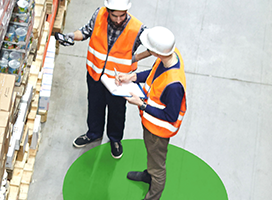
Every seven seconds, a worker becomes injured on the job in the United States. The cost of workplace injuries can be astronomical, with companies paying an average of $150,000 per injury.
Many companies, including warehouses and logistics firms, are investing more heavily in workplace safety. Management recognizes that workplace injuries are bad business for several reasons. They’re financially costly and also give the company a poor reputation among workers.
Companies must follow a long list of health and safety rules. But it’s also important to pay close attention to ergonomics, which can make a significant difference in workplace safety. Here’s how you can tell if your workplace is ergonomic.
What is Ergonomics?
Ergonomics is essentially the study of how jobs get done in the workplace. The purpose of ergonomics is to fit jobs and tasks to the worker instead of forcing the worker to fit themselves to the job. Through ergonomics, employers can change workplace operations to better suit the safety and needs of their employees. For example, warehouse workers are often asked to lift and move heavy items, which poses a danger to their health. Ergonomics looks at safer ways to complete these tasks.
Using Ergonomics to Prevent MSDs
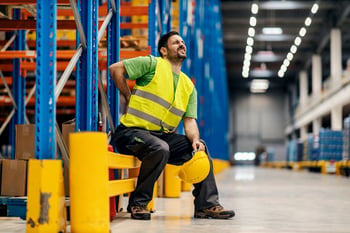 One of the overriding goals of ergonomics is the prevention of musculoskeletal disorders (MSDs). One of the primary causes of workplace injuries, MSDs affect the tendons, muscles, and nerves in your body. These injuries are caused by a variety of workplace risks, including repetitive tasks, heavy lifting, bending, reaching, pushing and pulling heavy loads, and working in uncomfortable positions. Ergonomics are used to prevent MSDs by reducing repetition and lessening muscle strain while still maintaining productivity.
One of the overriding goals of ergonomics is the prevention of musculoskeletal disorders (MSDs). One of the primary causes of workplace injuries, MSDs affect the tendons, muscles, and nerves in your body. These injuries are caused by a variety of workplace risks, including repetitive tasks, heavy lifting, bending, reaching, pushing and pulling heavy loads, and working in uncomfortable positions. Ergonomics are used to prevent MSDs by reducing repetition and lessening muscle strain while still maintaining productivity.
How to Tell if Your Workplace is Ergonomic
If your business has never paid attention to ergonomics, there’s a good chance you have some serious issues to address. One of the ways you can identify some of your prevalent risks is through a thorough ergonomic assessment. Before you do that, here’s how to tell if your company is ergonomic or, more specifically, the warning signs you need to make this area of your business a priority.
1. Increase in Employee Injuries
Your workplace probably isn’t ergonomic if you are experiencing a higher than normal injury rate. While increased workplace injuries could be related to a sudden event, like a roof collapse, anything else is likely directly correlated with work processes and practices. You can further examine these injuries to look at trends, like low back pain or carpal tunnel syndrome (CTS), to understand some of the underlying causes.
2. Lots of Repetitive Motion Activity
When your employees are asked to perform tons of repetitive motions throughout the workday, your workplace isn’t ergonomic. These workers will be exposed to a higher risk for MSDs like back injuries, CTS, and tendinitis. One of the biggest problems with MSDs is that they are rarely sudden. Instead, they develop over time, can be painful and debilitating, and be costly to treat.
3. Declining Productivity
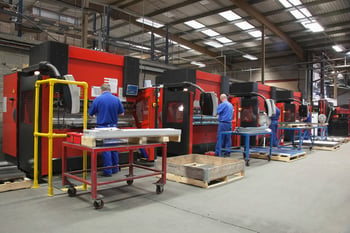 If employees are working in an environment that requires them to strain their muscles or contort their bodies, their productivity will eventually suffer. For example, assembly line workers will get quickly fatigued when asked to perform the same task over and over again. Or an employee that must walk needlessly back and forth to an office for instructions will become fatigued and start making mistakes. Your productivity numbers may be an excellent indicator of some of these issues.
If employees are working in an environment that requires them to strain their muscles or contort their bodies, their productivity will eventually suffer. For example, assembly line workers will get quickly fatigued when asked to perform the same task over and over again. Or an employee that must walk needlessly back and forth to an office for instructions will become fatigued and start making mistakes. Your productivity numbers may be an excellent indicator of some of these issues.
4. Lack of a Safety Culture
Another sign that your workplace isn’t ergonomic is when it lacks a strong safety culture. Every company should make safety one of its top priorities. If your safety culture is nonexistent or lacking, you will probably have some ergonomic risks that you need to address as well as some morale issues.
5. Low Employee Engagement
Employees want to feel as if their employers care about their safety and wellbeing. If they don’t get this feeling, they are less likely to be engaged at work, which is going to impact productivity and employee retention rates. When your business addresses ergonomics and safety, employees will be more comfortable and less likely to become injured.
Ways Ergonomics Can Boost Workplace Safety
Whether you run a warehouse, distribution center, or some other business that employs workers, ergonomics is necessary to ensure tasks are safe and ideally suited to your workers. Here are some of the ways you can boost workplace safety using ergonomics.
1. Proper Workplace Design
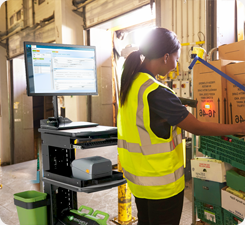 A safe workplace starts with designing a workstation that ensures it is appropriate for worker comfort and safety. Instead of making employees travel to a remote workstation or continually stoop to reach an uncomfortable one, consider using mobile workstations that will be wherever your workers need them.
A safe workplace starts with designing a workstation that ensures it is appropriate for worker comfort and safety. Instead of making employees travel to a remote workstation or continually stoop to reach an uncomfortable one, consider using mobile workstations that will be wherever your workers need them.
2. Training in Workplace Safety
Ergonomics also involves training your employees on safe work practices. This might include teaching employees about the importance of safe bending and lifting. Employees can also be taught how to spot common workplace hazards and report them.
3. Ergonomic Tools and Solutions
Finally, it’s important to note that you can leverage technology to accomplish several important workplace goals — improve efficiency, reduce errors, and increase safety through better ergonomics. Here are just a few examples:
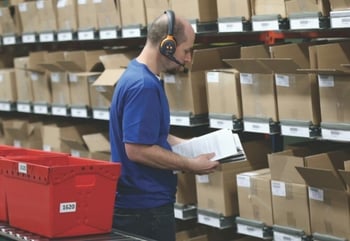
- Backsaver lifts — These devices lift heavy items, so your worker doesn’t have to risk their back muscles.
- Tilters — Some injuries happen when workers have to strain to reach objects. Tilters will tip containers so that items inside are easier to reach.
- RFID scanners — Instead of asking workers to use hand-held scanners for inventory control, RFID scanners can do this work automatically.
- Voice-picking — Voice picking technology gives workers instructions via a wireless headset, eliminating the need to walk back and forth to an office or carry around a clipboard.
- Mobile powered carts — Employees can walk miles each day inside a warehouse or distribution center just picking up or dropping off instructions. Mobile powered carts travel the workplace with the employee and eliminate this cumbersome requirement.
Ergonomic-related issues can be costly for businesses in terms of lost productivity and reputation. Employers should regularly review workplace environments to ensure workers are provided with the best possible resources to get the job done safely and efficiently. Fortunately, there are plenty of simple adjustments and technology solutions available that can boost efficiency, reduce human errors, and improve workplace safety.
